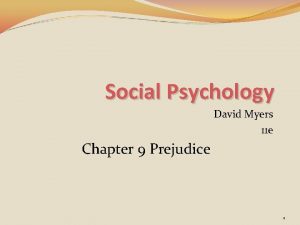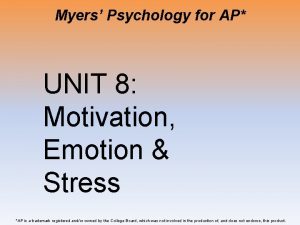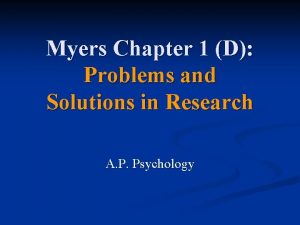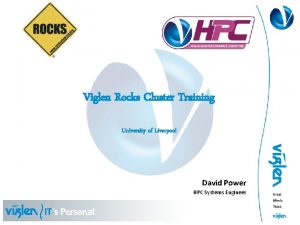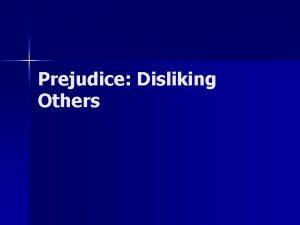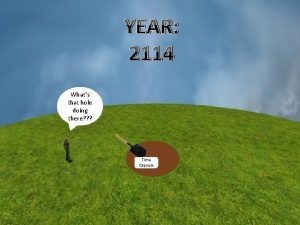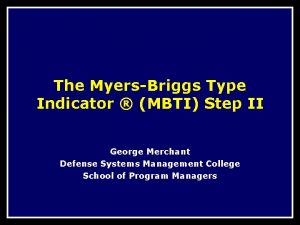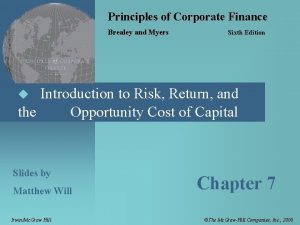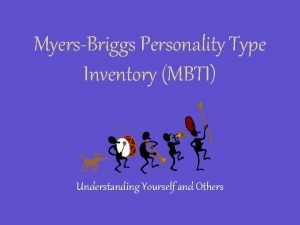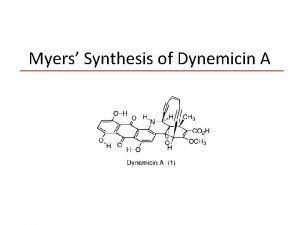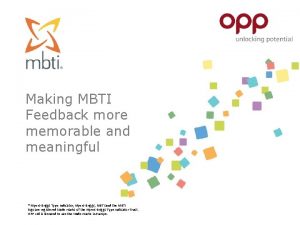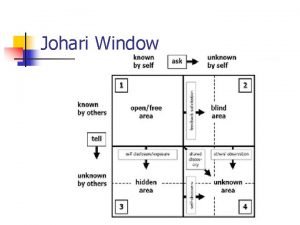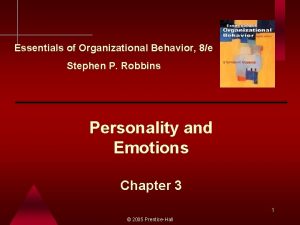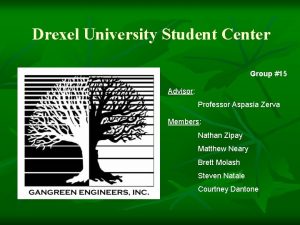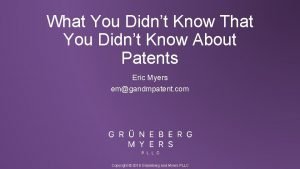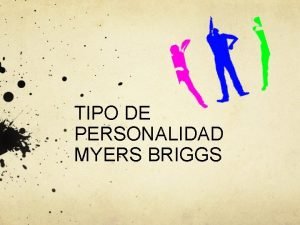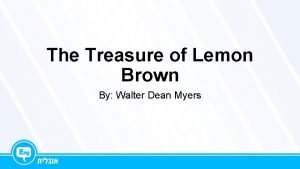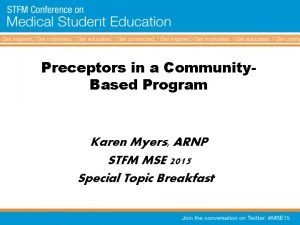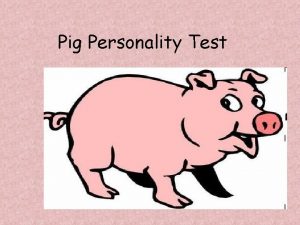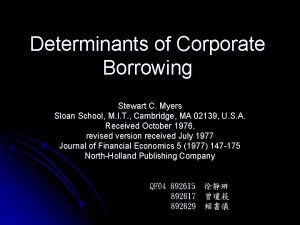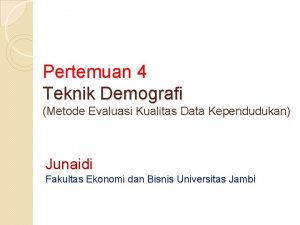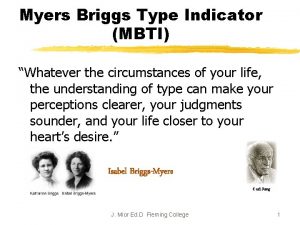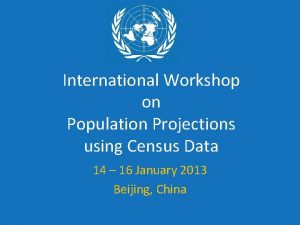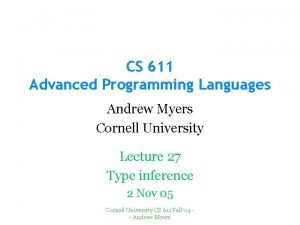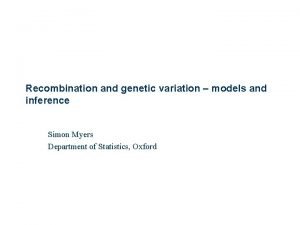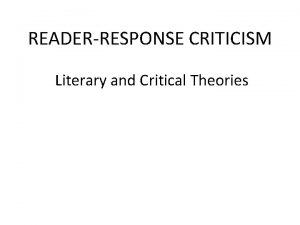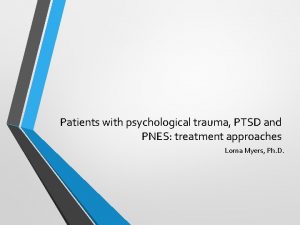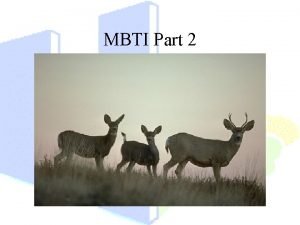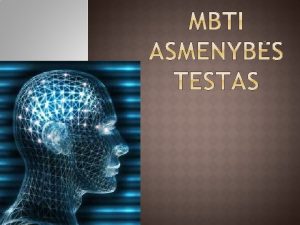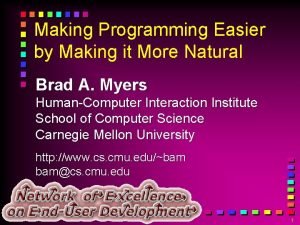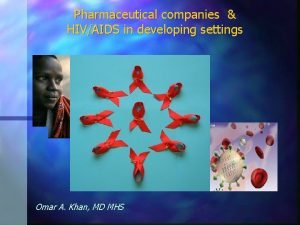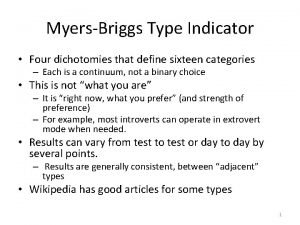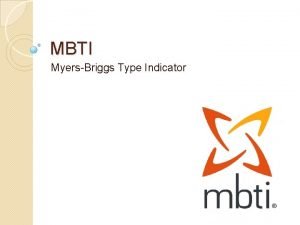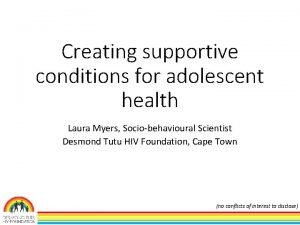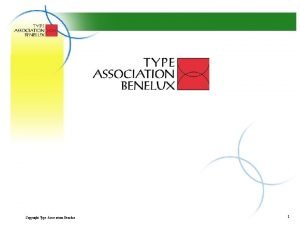Myers Psychology for AP David G Myers Power





















































































































































- Slides: 149

Myers’ Psychology for AP* David G. Myers Power. Point Presentation Slides by Kent Korek Germantown High School Worth Publishers, © 2010 *AP is a trademark registered and/or owned by the College Board, which was not involved in the production of, and does not endorse, this product.

Unit 9: Developmental Psychology

Unit Overview • • • Prenatal Development and the Newborn Infancy and Childhood Parents and Peers Adolescence Adulthood Reflections on Two Major Developmental Issues Click on the any of the above hyperlinks to go to that section in the presentation.

Introduction • Developmental psychology – a branch of psychology that studies physical, cognitive, and social change throughout the life span. – Three major issues – Nature versus nurture – Continuity and stages – Stability and change

Prenatal Development and the Newborn

Prenatal Development • Conception • Zygote – the fertilized egg, it enters a 2 -week period of rapid cell division and develops into an embryo. • Embryo – the developing human organism from about 2 weeks after fertilization through the second month. • Fetus – the developing human organism from 9 weeks after conception to birth.

Prenatal Development and the Newborn Life is sexually transmitted

Prenatal Development and the Newborn 40 days 45 days 2 months 4 months

Prenatal Development and the Newborn

Prenatal Development • Placenta - provides oxygen and nutrients to your growing baby and removes waste products from your baby's blood. • Teratogens – agents, such as chemicals and viruses, can harm the embryo or fetus during prenatal development.

Prenatal Development Fetal alcohol syndrome (FAS) physical and cognitive abnormalities in children caused by a pregnant woman’s heavy drinking. In severe cases, symptoms include noticeable facial misproportions.

The Competent Newborn • Reflexes – Rooting – Moro – Babinski – Palmer Grasp

The Competent Newborn • Habituation decreasing responsiveness with repeated stimulation. As infants gain familiarity their interest wanes and they look away sooner. – Novelty-preference procedure

Prenatal Development and the Newborn § Preferences § human voices and faces § facelike images--> § smell and sound of mother preferred

Infancy & Childhood

Physical Development Brain Development • Brain development • Pruning process • Maturation biological growth processes that enable orderly changes in behavior, relatively uninfluenced by experience.

Physical Development Motor Development • Motor development – Learning to walk • Sit-up • Crawl • Stand • Walk

Physical Development Maturation and Infant Memory • Infantile amnesia – no memories before age three

Cognitive Development • Cognition – all mental activities associated with thinking, knowing, remembering, and communicating. • Jean Piaget – Swiss psychologist Theory of Cognitive Development

Cognitive Development – Schema • a concept or framework that organizes and interprets information. – Assimilation • interpreting our new experiences in terms of our existing schemas. – Accommodation • adapting our current understandings (schemas) to incorporate new information

Cognitive Development Piaget’s Theory and Current Thinking • Sensorimotor Stage – Object permanence • “out of sight, out of mind”

Cognitive Development Piaget’s Theory and Current Thinking • Sensorimotor Stage – Object permanence • “out of sight, out of mind”

Cognitive Development Piaget’s Theory and Current Thinking • Sensorimotor Stage – Object permanence • “out of sight, out of mind”

Infancy and Childhood: Cognitive Development • Babies are Stupid

Cognitive Development Piaget’s Theory and Current Thinking • Preoperational Stage – Conservation

Cognitive Development Piaget’s Theory and Current Thinking • Preoperational Stage – Conservation

Cognitive Development Piaget’s Theory and Current Thinking • Preoperational Stage – Conservation

Cognitive Development Piaget’s Theory and Current Thinking • Egocentrism – in Piaget’s theory, the preoperational child’s difficulty taking another’s point of view.

Conservation

Cognitive Development • Concrete Operational Stage – Piaget’s stage of cognitive development ( 6 or 7 to 11 years of age) children gain the mental operations that enable them to think logically about concrete events.

Cognitive Development Piaget’s Theory and Current Thinking • Formal Operational Stage – Abstract concepts

Cognitive Development Piaget’s Theory and Current Thinking

Cognitive Development Piaget’s Theory and Current Thinking

Cognitive Development Piaget’s Theory and Current Thinking

Cognitive Development Piaget’s Theory and Current Thinking

Cognitive Development Piaget’s Theory and Current Thinking

Cognitive Development Piaget’s Theory and Current Thinking The Bill of rights Peek-a-boo Addition & subtraction Nursery rhymes

Cognitive Development Piaget’s Theory and Current Thinking • Theory of Mind – people’s ideas about their own and other’s mental states – about their feelings, perceptions, and thoughts, and the behaviors these might predict. • Lev Vygotsky – social learning tends to precede (i. e. come before) development. – Zone of proximal development • difference between what a learner can do without help and what they can do with help – i. e. dancing

Cognitive Development Reflecting on Piaget’s Theory • Influential theory • Development is more continuous • Larger emphasis on social factors

Cognitive Development • Autism – a disorder that appears in childhood and is marked by deficient communication, social interaction, and understanding of other’s states of mind.

Social Development Origins of Attachment • Attachment – Body contact • Harry Harlow’s – Familiarity • Critical period • Imprinting – Konrad Lorenz studies

Social Development Attachment Differences: Temperament and Parenting • Mary Ainsworth’s “strange situation” – Secure attachment – Insecure attachment – Disorganized Attachment

Social Development Attachment Differences: Temperament and Parenting • Mary Ainsworth’s “strange situation”

Social Development • Stranger anxiety – the fear of strangers that infants commonly display, beginning by about 8 months of age.

Social Development Attachment Differences: Temperament and Parenting • Temperament – a person’s characteristic emotional reactivity and intensity. – Easy, difficult & slow to warm up babies • Fearful 2 yr. olds – shy 8 yr. olds • Intense preschoolers – intense adults • Erikson’s Basic trust – a sense that the world is predictable and trustworthy; formed during infancy by appropriate experiences with responsive caregivers. – Securely attached children – basic trust

Social Development Deprivation of Attachment • Early deprivation of attachment – Leaves trauma to the brain • Disruption of attachment – Trauma – can recover if put in good environment • Does day care affect attachment? – High quality – no / poor quality - yes

Social Development Self-Concept • Self-concept – our understanding and evaluation of who we are. – Self-esteem – Self-awareness

Social Development Parenting Styles • Parenting styles (Baumrind) – Authoritarian – Permissive – Authoritative • Correlation versus causation

Social Development Culture and Child-Rearing • Differences in child-rearing from culture to culture – Western – independent – Eastern – compliant – Key – warm, authoritative

Social Development • Erikson – 8 Ages of Man – 8 stages – Social task to complete – Creates a crisis – Resolve the crisis

Erikson’s 8 Ages of Man Stage Name & Ages Social Crisis Developmental Task Oral-Sensory – Birth to 18 mo. Trust vs. Mistrust Feeding

Erikson’s 8 Ages of Man Stage Name & Ages Social Crisis Developmental Task Oral-Sensory – Birth to 18 mo. Trust vs. Mistrust Feeding Muscular – Anal – 18 mos. to 3 yrs. Autonomy vs. Shame & Doubt Toilet Training

Erikson’s 8 Ages of Man Stage Name & Ages Social Crisis Developmental Task Oral-Sensory – Birth to 18 mo. Trust vs. Mistrust Feeding Muscular – Anal – 18 mos. to 3 yrs. Autonomy vs. Shame & Doubt Toilet Training Locomotor – 3 to 6 yrs. Initiative vs. Guilt Independent Play

Erikson’s 8 Ages of Man Stage Name & Ages Social Crisis Developmental Task Oral-Sensory – Birth to 18 mo. Trust vs. Mistrust Feeding Muscular – Anal – 18 mos. to 3 yrs. Autonomy vs. Shame & Doubt Toilet Training Locomotor – 3 to 6 yrs. Initiative vs. Guilt Independent Play Latency – 6 to 12 yrs. Industry vs. Inferiority School

Parents and Peers

Parents and Early Experiences • How much credit (or blame) do parents deserve? • Parents - important for education, discipline, responsibility, orderliness, charitableness, and interacting with authority figures.

Peer Influence • Peer influence • Peers- important for learning cooperation, finding popularity, inventing styles of interaction among peers

Adolescence

Introduction • Adolescence – the transition period from childhood to adulthood, extending from puberty to independence.

Physical Development • Puberty – the period of sexual maturation, during which a person becomes capable of reproducing – Primary sexual characteristics • the body structures (ovaries, testes, and external genitalia) that makes sexual reproduction possible • Menarche - the first menstrual period. – Secondary sexual characteristics • nonreproductive sexual characteristics, such as female breasts and hips, male voice quality, and body hair.

Physical Development

Erikson’s 8 Ages of Man Stage Name & Ages Social Crisis Developmental Task Oral-Sensory – Birth to 18 mo. Trust vs. Mistrust Feeding Muscular – Anal – 18 mos. To 3 yrs. Autonomy vs. Shame & Doubt Toilet Training Locomotor – 3 to 6 yrs. Initiative vs. Guilt Independent Play Latency – 6 to 12 yrs. Industry vs. Inferiority School Adolescence – 12 to 18 yrs. Identity vs. Role Confusion Identity Formation/ Peer Relationships

Social Development • Forming an identity – Identity • our sense of self; according to Erikson, the adolescent’s task is to solidify a sense of self by testing and integrating various roles. – Social identity • the “we” aspect of our self-concept; the part of our answer to “Who am I? ” that comes from our group memberships. – Intimacy • in Erikson’s theory, the ability to form close, loving relationships; a primary developmental task in late adolescence and early adulthood.

Emerging Adulthood • Emerging adulthood – for some people in modern cultures, a period from the late teens to mid-twenties, bridging the gap between adolescent dependence and adulthood.

Moral Development

Cognitive Development Developing Morality Lawrence Kohlberg’s Moral Ladder Postconventional level Morality of abstract principles: to affirm agreed-upon rights and personal ethical principles Conventional level Morality of law and social rules: to gain approval or avoid disapproval Preconventional level Morality of self-interest: to avoid punishment or gain concrete rewards § As moral development progresses, the focus of concern moves from the self to the wider social world.

Adulthood

Physical Development • Physical changes in middle adulthood – Menopause • the time of natural cessation of menstruation; also refers to biological changes a woman experiences as her ability to reproduce declines. • Physical changes in later life – Life expectancy – Sensory abilities – Health – Dementia and Alzheimer’s Disease • Alzheimer's is a type of dementia that causes problems with memory, thinking and behavior.

Social Development Adulthood’s Ages and Stages • Midlife transition • Social clock – the culturally preferred timing of social events such as marriage, parenthood, and retirement.

Adulthood: Physical Development • 1 Jeff Hegeman 11. 33 • 50 - 54 • 1 Steve Davis 11. 80 • 55 - 59 • 1 Rich Chess 13. 50 • 60 - 64 • 1 Frank Schukar 14. 40 • 65 - 69 • 1 Edward Patterson 15. 60 70 - 74 • 1 James Wagner 16. 06 • 75 - 79 • 1 Elmer Murman 18. 30 • over 85

Physical Development Adulthood’s Ages and Stages

Cognitive Development Aging and Intelligence • Cross-Sectional Evidence – Cross-sectional study • a study in which people of different ages are compared with one another. • Longitudinal Evidence – Longitudinal study • research in which the same people are restudied and retested over a long period

Cognitive Development Aging and Intelligence • It all depends – Crystallized intelligence • our accumulated knowledge and verbal skills; tends to increase with age. – Fluid intelligence • our ability to reason speedily and abstractly; tends to decrease during late adulthood.

Erikson’s 8 Ages of Man Stage Name & Ages Social Crisis Developmental Task Oral-Sensory – Birth to 18 mo. Trust vs. Mistrust Feeding Muscular – Anal – 18 mos. To 3 yrs. Autonomy vs. Shame & Doubt Toilet Training Locomotor – 3 to 6 yrs. Initiative vs. Guilt Independent Play Latency – 6 to 12 yrs. Industry vs. Inferiority School Adolescence – 12 to 18 yrs. Identity vs. Role Confusion Identity Formation/ Peer Relationships Young Adulthood 19 to 40 yrs. Love Relationships Intimacy vs. Isolation

Erikson’s 8 Ages of Man Stage Name & Ages Social Crisis Developmental Task Oral-Sensory – Birth to 18 mo. Trust vs. Mistrust Feeding Muscular – Anal – 18 mos. To 3 yrs. Autonomy vs. Shame & Doubt Toilet Training Locomotor – 3 to 6 yrs. Initiative vs. Guilt Independent Play Latency – 6 to 12 yrs. Industry vs. Inferiority School Adolescence – 12 to 18 yrs. Identity vs. Role Confusion Identity Formation/ Peer Relationships Young Adulthood 19 to 40 yrs. Intimacy vs. Isolation Love Relationships Middle Adulthood 40 – 65 yrs. Generativity vs. Stagnation Parenting

Erikson’s 8 Ages of Man Stage Name & Ages Social Crisis Developmental Task Oral-Sensory – Birth to 18 mo. Trust vs. Mistrust Feeding Muscular – Anal – 18 mos. To 3 yrs. Autonomy vs. Shame & Doubt Toilet Training Locomotor – 3 to 6 yrs. Initiative vs. Guilt Independent Play Latency – 6 to 12 yrs. Industry vs. Inferiority School Adolescence – 12 to 18 yrs. Identity vs. Role Confusion Identity Formation/ Peer Relationships Young Adulthood 19 to 40 yrs. Intimacy vs. Isolation Love Relationships Middle Adulthood 40 – 65 yrs. Generativity vs. Stagnation Parenting Maturity – 65 - Death Ego integrity vs. Despair Reflection on and Acceptance of One’s Life

Cognitive Development-Aging and Memory • Recall versus recognition • Prospective memory – remembering to perform intended actions in the future, or simply, remembering to remember.

Social Development Well-Being Across the Life Span • Well-being across the life span • Death and dying

Social Development Adulthood Commitments • Love • Work

The End

Adulthood: Cognitive Development Reasoning ability score 60 Cross-sectional method suggests decline 55 50 45 Longitudinal method suggests more stability 40 35 25 32 39 46 53 60 67 74 81 Age in years Cross-sectional method Longitudinal method

Adulthood: Cognitive Development 100 Percent 90 of names recalled 80 Older age groups have poorer performance 70 60 50 40 After two introductions 30 20 After one 10 introductions 0 18 40 50 60 Age group § Recalling new names After three introductions introduced once, twice, or three times is easier for younger adults than for older ones (Crook & 70 West, 1990).

Adulthood: Cognitive Development Number 24 Of words remembered 20 16 12 8 4 0 § In a study by Schonfield & Robertson (1966), Number of words the ability to recall recognized is stable with age new information declined during early and middle Number of words adulthood, but the recalled declines with age ability to recognize new information did 20 30 40 50 60 70 not. Age in years

Adulthood- Cognitive Development Intelligence (IQ) score 105 Verbal scores are stable with age 100 95 90 85 Nonverbal scores decline with age 80 75 20 25 Verbal scores Nonverbal scores 35 45 Age group 55 65 § Verbal intelligence scores hold steady with age, while nonverbal intelligence scores decline 70 (adapted from Kaufman & others, 1989).

Gender Development • Gender – in psychology, the biologically and socially influenced characteristics by which people define male and female.

Gender Development Gender Similarities and Differences • Gender and aggression – Aggression • physical or verbal behavior intended to hurt someone. • Physical versus relational aggression • Gender and social power • Gender and social connectedness

Gender Development The Nature of Gender • Sex chromosomes – X chromosome • the sex chromosome found in both men and women. Females have two X chromosomes; males have one. – Y chromosome • the sex chromosome found only in males. When paired with an X chromosome from the mother, it produces a male child. • Sex hormones – Testosterone

Gender Development The Nurture of Gender • Gender Role – Role • Gender and child rearing – Gender identity – Gender typing • Social learning theory

Gender Development The Nurture of Gender

• Types of Files Teacher Information – This presentation has been saved as a “basic” Powerpoint file. While this file format placed a few limitations on the presentation, it insured the file would be compatible with the many versions of Powerpoint teachers use. To add functionality to the presentation, teachers may want to save the file for their specific version of Powerpoint. • Animation – Once again, to insure compatibility with all versions of Powerpoint, none of the slides are animated. To increase student interest, it is suggested teachers animate the slides wherever possible. • Adding slides to this presentation – Teachers are encouraged to adapt this presentation to their personal teaching style. To help keep a sense of continuity, blank slides which can be copied and pasted to a specific location in the presentation follow this “Teacher Information” section.

Teacher Information • Hyperlink Slides - This presentation contain two types of hyperlinks. Hyperlinks can be identified by the text being underlined and a different color (usually purple). – Unit subsections hyperlinks: Immediately after the unit title slide, a page (slide #3) can be found listing all of the unit’s subsections. While in slide show mode, clicking on any of these hyperlinks will take the user directly to the beginning of that subsection. This allows teachers quick access to each subsection. – Bold print term hyperlinks: Every bold print term from the unit is included in this presentation as a hyperlink. While in slide show mode, clicking on any of the hyperlinks will take the user to a slide containing the formal definition of the term. Clicking on the “arrow” in the bottom left corner of the definition slide will take the user back to the original point in the presentation. These hyperlinks were included for teachers who want students to see or copy down the exact definition as stated in the text. Most teachers prefer the definitions not be included to prevent students from only “copying down what is on the screen” and not actively listening to the presentation. For teachers who continually use the Bold Print Term Hyperlinks option, please contact the author using the email address on the next slide to learn a technique to expedite the returning to the original point in the presentation.

Teacher Information • Continuity slides – Throughout this presentation there are slides, usually of graphics or tables, that build on one another. These are included for three purposes. • By presenting information in small chunks, students will find it easier to process and remember the concepts. • By continually changing slides, students will stay interested in the presentation. • To facilitate class discussion and critical thinking. Students should be encouraged to think about “what might come next” in the series of slides. • Please feel free to contact me at kkorek@germantown. k 12. wi. us with any questions, concerns, suggestions, etc. regarding these presentations. Kent Korek Germantown High School Germantown, WI 53022 262 -253 -3400 kkorek@germantown. k 12. wi. us

Division title (green print) subdivision title (blue print) • xxx – xxx

Division title (green print) subdivision title (blue print) Use this slide to add a table, chart, clip art, picture, diagram, or video clip. Delete this box when finished

Definition Slide = add definition here

Definition Slides

Developmental Psychology = a branch of psychology that studies physical, cognitive, and social change throughout the life span.

Zygote = the fertilized egg, it enters a 2 -week period of rapid cell division and develops into an embryo.

Embryo = the developing human organism from about 2 weeks after fertilization through the second month.

Fetus = the developing human organism from 9 weeks after conception to birth.

Teratogens = agents, such as chemicals and viruses, that can reach the embryo or fetus during prenatal development and cause harm.

Fetal Alcohol Syndrome (FAS) = physical and cognitive abnormalities in children caused by a pregnant woman’s heavy drinking. In severe cases, symptoms include noticeable facial misproportions.

Habituation = decreasing responsiveness with repeated stimulation. As infants gain familiarity with repeated exposure to a visual stimulus, their interest wanes and they look away sooner.

Maturation = biological growth processes that enable orderly changes in behavior, relatively uninfluenced by experience.

Cognition = all mental activities associated with thinking, knowing, remembering, and communicating.

Schema = a concept or framework that organizes and interprets information.

Assimilation = interpreting our new experiences in terms of our existing schemas.

Accommodation = adapting our current understandings (schemas) to incorporate new information.

Sensorimotor Stage = Piaget’s stage (from birth to about 2 years of age) during which infants know the world mostly in terms of their sensory impressions and motor activities.

Object Permanence = the awareness that things continue to exist when not perceived.

Preoperational Stage = Piaget’s stage (from 2 to about 6 or 7 years of age) during which a child learns to use language but does not yet comprehend the mental operations of concrete logic. .

Conservation = the principle that properties such as mass, volume, and number remain the same despite changes in the forms of objects.

Egocentrism = in Piaget’s theory, the preoperational child’s difficulty taking another’s point of view.

Theory of Mind = people’s ideas about their own and other’s mental states – about their feelings, perceptions, and thoughts, and the behaviors these might predict.

Concrete Operational Stage = Piaget’s stage of cognitive development (from about 6 or 7 to 11 years of age) during which children gain the mental operations that enable them to think logically about concrete events.

Formal Operational Stage = Piaget’s stage of cognitive development (normally beginning about age 12) during which people begin to think logically about abstract concepts.

Autism = a disorder that appears in childhood and is marked by deficient communication, social interaction, and understanding of other’s states of mind.

Stranger Anxiety = the fear of strangers that infants commonly display, beginning by about 8 months of age.

Attachment = an emotional tie with another person; shown in young children by their seeking closeness to the caregiver and showing distress on separation.

Critical Period = an optimal period shortly after birth when an organism’s exposure to certain stimuli or experiences produces proper development.

Imprinting = the process by which certain animals form attachments during a critical period very early in life.

Temperament = a person’s characteristic emotional reactivity and intensity.

Basic Trust = according to Erikson, a sense that the world is predictable and trustworthy; said to be formed during infancy by appropriate experiences with responsive caregivers.

Self-concept = our understanding and evaluation of who we are.

Gender = in psychology, the biologically and socially influenced characteristics by which people define male and female.

Aggression = physical or verbal behavior intended to hurt someone.

X Chromosome = the sex chromosome found in both men and women. Females have two X chromosomes; males have one. An X chromosome from each parent produces a female child.

Y Chromosome =the sex chromosome found only in males. When paired with an X chromosome from the mother, it produces a male child.

Testosterone = the most important of the male sex hormones. Both males and females have it, but the additional testosterone in males stimulates the growth of the male sex organs in the fetus and the development of the male sex characteristics during puberty.

Role = a set of expectations (norms) about a social position, defining how those in the position ought to behave.

Gender Role = a set of unexpected behaviors for males or females.

Gender Identity = our sense of being male or female.

Gender Typing = the acquisition of a traditional masculine or feminine role.

Social Learning Theory = theory that we learn social behavior by observing and imitating and by being rewarded or punished.

Adolescence = the transition period from childhood to adulthood, extending from puberty to independence.

Puberty = the period of sexual maturation, during which a person becomes capable of reproducing.

Primary Sexual Characteristics = the body structures (ovaries, testes, and external genitalia) that makes sexual reproduction possible.

Secondary Sex Characteristics = nonreproductive sexual characteristics, such as female breasts and hips, male voice quality, and body hair.

Menarche = the first menstrual period.

Identity = our sense of self; according to Erikson, the adolescent’s task is to solidify a sense of self by testing and integrating various roles.

Social Identify = the “we” aspect of our self-concept; the part of our answer to “Who am I? ” that comes from our group memberships.

Intimacy = in Erikson’s theory, the ability to form close, loving relationships; a primary developmental task in late adolescence and early adulthood.

Emerging Adulthood = for some people in modern cultures, a period from the late teens to mid-twenties, bridging the gap between adolescent dependence and full independence and responsible adulthood.

Menopause = the time of natural cessation of menstruation; also refers to the biological changes a woman experiences as her ability to reproduce declines.

Cross-sectional Study = a study in which people of different ages are compared with one another.

Longitudinal Study = research in which the same people are restudied and retested over a long period.

Crystallized Intelligence = our accumulated knowledge and verbal skills; tends to increase with age.

Fluid Intelligence = our ability to reason speedily and abstractly; tends to decrease during late adulthood.

Social Clock = the culturally preferred timing of social events such as marriage, parenthood, and retirement.
 David myers psychology 9th edition
David myers psychology 9th edition Psychology eighth edition david g myers
Psychology eighth edition david g myers David g myers psychology 8th edition
David g myers psychology 8th edition Psychology ninth edition david g myers
Psychology ninth edition david g myers Psychology tenth edition david g myers
Psychology tenth edition david g myers Social psychology myers
Social psychology myers Myers ap psych unit 8 vocab
Myers ap psych unit 8 vocab Tutored human enrichment
Tutored human enrichment Myers' psychology for ap solutions
Myers' psychology for ap solutions Psychology in everyday life myers
Psychology in everyday life myers Myers' psychology for ap
Myers' psychology for ap Active power reactive power apparent power
Active power reactive power apparent power Fspos
Fspos Typiska drag för en novell
Typiska drag för en novell Nationell inriktning för artificiell intelligens
Nationell inriktning för artificiell intelligens Ekologiskt fotavtryck
Ekologiskt fotavtryck Varför kallas perioden 1918-1939 för mellankrigstiden
Varför kallas perioden 1918-1939 för mellankrigstiden En lathund för arbete med kontinuitetshantering
En lathund för arbete med kontinuitetshantering Underlag för särskild löneskatt på pensionskostnader
Underlag för särskild löneskatt på pensionskostnader Personlig tidbok
Personlig tidbok Anatomi organ reproduksi
Anatomi organ reproduksi Vad är densitet
Vad är densitet Datorkunskap för nybörjare
Datorkunskap för nybörjare Boverket ka
Boverket ka Att skriva debattartikel
Att skriva debattartikel För och nackdelar med firo
För och nackdelar med firo Nyckelkompetenser för livslångt lärande
Nyckelkompetenser för livslångt lärande Påbyggnader för flakfordon
Påbyggnader för flakfordon Kraft per area
Kraft per area Publik sektor
Publik sektor Kyssande vind
Kyssande vind Presentera för publik crossboss
Presentera för publik crossboss Teckenspråk minoritetsspråk argument
Teckenspråk minoritetsspråk argument Kanaans land
Kanaans land Klassificeringsstruktur för kommunala verksamheter
Klassificeringsstruktur för kommunala verksamheter Fimbrietratt
Fimbrietratt Bästa kameran för astrofoto
Bästa kameran för astrofoto Cks
Cks Verifikationsplan
Verifikationsplan Bra mat för unga idrottare
Bra mat för unga idrottare Verktyg för automatisering av utbetalningar
Verktyg för automatisering av utbetalningar Rutin för avvikelsehantering
Rutin för avvikelsehantering Smärtskolan kunskap för livet
Smärtskolan kunskap för livet Ministerstyre för och nackdelar
Ministerstyre för och nackdelar Tack för att ni har lyssnat
Tack för att ni har lyssnat Referatmarkeringar
Referatmarkeringar Redogör för vad psykologi är
Redogör för vad psykologi är Matematisk modellering eksempel
Matematisk modellering eksempel Tack för att ni har lyssnat
Tack för att ni har lyssnat Borra hål för knoppar
Borra hål för knoppar Vilken grundregel finns det för tronföljden i sverige?
Vilken grundregel finns det för tronföljden i sverige? Formula varians
Formula varians Tack för att ni har lyssnat
Tack för att ni har lyssnat Rita perspektiv
Rita perspektiv Vad är verksamhetsanalys
Vad är verksamhetsanalys Tobinskatten för och nackdelar
Tobinskatten för och nackdelar Blomman för dagen drog
Blomman för dagen drog Mästare lärling modell
Mästare lärling modell Egg för emanuel
Egg för emanuel Elektronik för barn
Elektronik för barn Klädsel i rom
Klädsel i rom Strategi för svensk viltförvaltning
Strategi för svensk viltförvaltning Kung dog 1611
Kung dog 1611 Indikation för kejsarsnitt på moderns önskan
Indikation för kejsarsnitt på moderns önskan Sju för caesar
Sju för caesar Tack för att ni lyssnade
Tack för att ni lyssnade Multiplikation uppställning
Multiplikation uppställning Dikt rimma
Dikt rimma Inköpsprocessen steg för steg
Inköpsprocessen steg för steg Rbk-mätning
Rbk-mätning Ledarskapsteorier
Ledarskapsteorier Vad är hsil
Vad är hsil Myndigheten för delaktighet
Myndigheten för delaktighet Trög för kemist
Trög för kemist Sju principer för tillitsbaserad styrning
Sju principer för tillitsbaserad styrning Läkarutlåtande för livränta
Läkarutlåtande för livränta Kraftledning karttecken
Kraftledning karttecken Lek med former i förskolan
Lek med former i förskolan Texter för hinduer tantra
Texter för hinduer tantra Vanlig celldelning
Vanlig celldelning Bris för vuxna
Bris för vuxna Jätte råtta
Jätte råtta What are the extremes of intelligence ap psychology
What are the extremes of intelligence ap psychology Positive psychology ap psychology definition
Positive psychology ap psychology definition Psychology experiment
Psychology experiment Fundamental attribution error ap psychology
Fundamental attribution error ap psychology Introspection method
Introspection method Social psychology is the scientific study of
Social psychology is the scientific study of Health psychology definition ap psychology
Health psychology definition ap psychology David power liverpool
David power liverpool Nature and power of prejudice in social psychology
Nature and power of prejudice in social psychology Newberry honor book
Newberry honor book Bad boy walter dean myers summary
Bad boy walter dean myers summary Mr irwin lasher
Mr irwin lasher Myers-briggs step ii
Myers-briggs step ii Binary counting sequence
Binary counting sequence Brealey and myers
Brealey and myers Draw a pig exercise
Draw a pig exercise Mbti artisan
Mbti artisan Andrew myers chemistry
Andrew myers chemistry Monster by walter dean myers vocabulary
Monster by walter dean myers vocabulary Monster walter dean myers vocabulary
Monster walter dean myers vocabulary Mbti examples
Mbti examples Johari window personality test
Johari window personality test Tony robbins myers briggs
Tony robbins myers briggs Drexel student center
Drexel student center Bridge to terabithia chapter 4
Bridge to terabithia chapter 4 5 voices guardian
5 voices guardian Gruneberg and myers
Gruneberg and myers Irwin lasher
Irwin lasher Tipos de personalidad
Tipos de personalidad Lemon brown summary
Lemon brown summary The treasure of lemon brown by walter dean myers
The treasure of lemon brown by walter dean myers Dr karen myers
Dr karen myers Pig personality profile
Pig personality profile Mbti j p
Mbti j p Determinants of corporate borrowing
Determinants of corporate borrowing Indeks myers adalah
Indeks myers adalah Riasec線上測驗
Riasec線上測驗 Myers briggs color wheel
Myers briggs color wheel Bad boy by walter dean myers
Bad boy by walter dean myers Myers–briggs type indicator
Myers–briggs type indicator Christopher jayne
Christopher jayne Myers blended index
Myers blended index Andrew myers cornell
Andrew myers cornell Jacobian myers
Jacobian myers Reader response theory
Reader response theory E i s n t f j p
E i s n t f j p Mmpi mbti
Mmpi mbti Ptsd seizures
Ptsd seizures Isabel briggs myers
Isabel briggs myers Innovateur mbti
Innovateur mbti Mbti step
Mbti step Brad myers cmu
Brad myers cmu Mbti strengths and weaknesses
Mbti strengths and weaknesses Wide area network wan fort myers
Wide area network wan fort myers The simpsons mbti
The simpsons mbti The treasure of lemon brown conflict
The treasure of lemon brown conflict The treasure of lemon brown conflict and resolution
The treasure of lemon brown conflict and resolution Obeor
Obeor Interesting facts about isaiah
Interesting facts about isaiah Genericrx
Genericrx Myers briggs dichotomies
Myers briggs dichotomies Abu ghraib
Abu ghraib N vs s myers briggs
N vs s myers briggs Erica myers microsoft
Erica myers microsoft Hct+
Hct+ Mbti copyright
Mbti copyright Solar power satellites and microwave power transmission
Solar power satellites and microwave power transmission Actual power
Actual power





